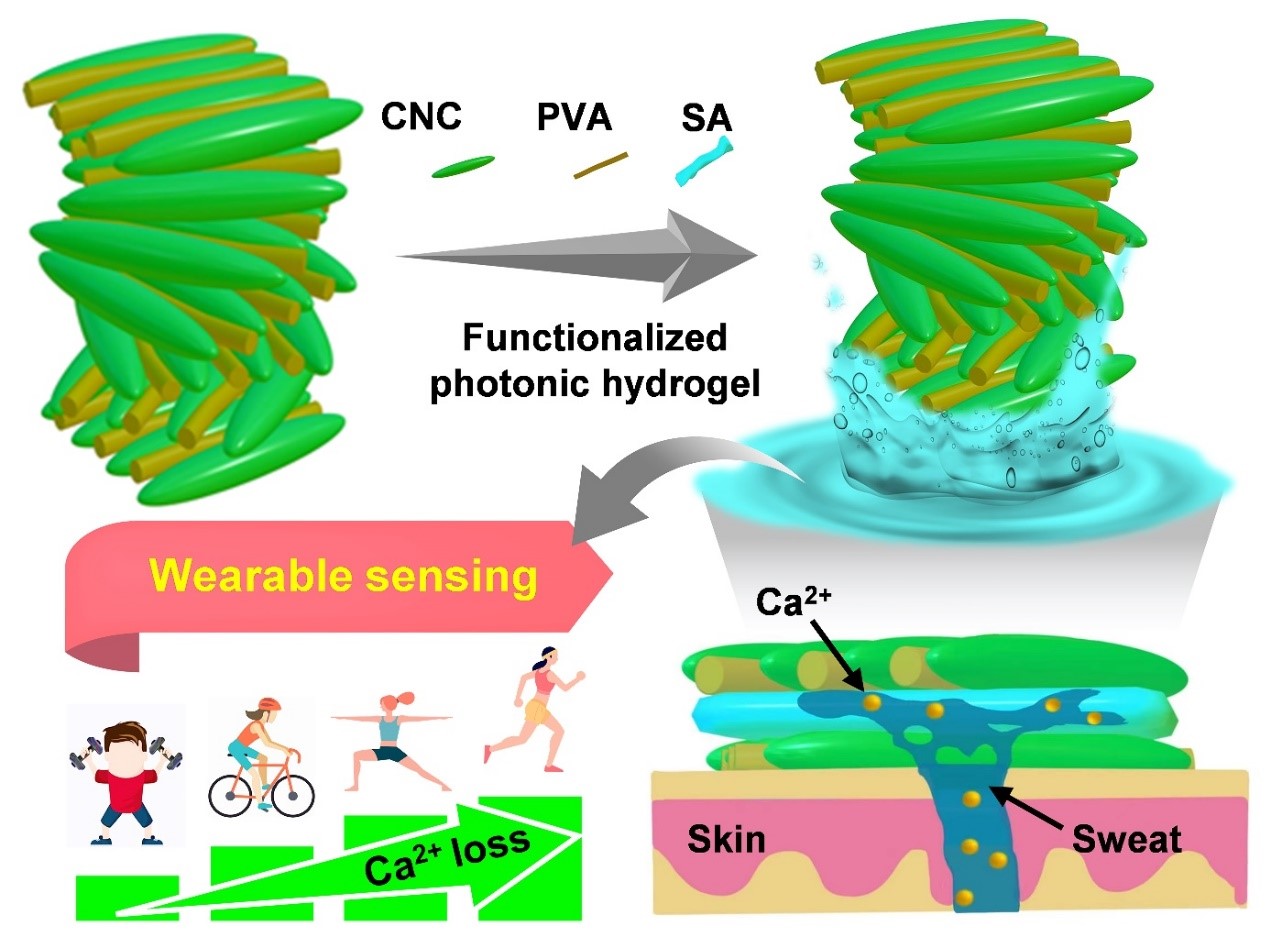| May 08, 2023 |
A flexible sweat sensor based on photonic cellulose nanocrystals
(Nanowerk News) Cellulose nanocrystals (CNCs), an emerging bio-based material, have found extensive applications in industries such as electronics, bioplastics, and energy. However, the functional failure of these materials in wet or liquid environments hinders their progress in fields like biomedicine, membrane separation, environmental monitoring, and wearable devices.
|
|
Recently, a research team led by Prof. Qing Guangyan from the Dalian Institute of Chemical Physics (DICP) of the Chinese Academy of Sciences developed a sustainable, insoluble, and chiral photonic cellulose nanocrystal patch for calcium ion (Ca2+) sensing in sweat. The study, published in Small ("Sustainable, Insoluble, and Photonic Cellulose Nanocrystal Patches for Calcium Ion Sensing in Sweat"), offers a fresh perspective on the functionalization of CNCs.
|
 |
| Highly elastic hydrogels constructed through heat-induced hydrogen bond remodeling can transition between wet and dry states. (Image: Zhang Fusheng and Li Qiongya)
|
|
The researchers devised a simple and efficient method for creating insoluble CNC-based hydrogels. They discovered that by employing intermolecular hydrogen bond reconstruction, thermal dehydration allowed the optimized CNC composite photonic film to form a stable hydrogel network in an aqueous solution. Furthermore, the hydrogel could be reversibly switched between dry and wet states, making it suitable for specific functionalization.
|
|
The incorporation of functionalized molecules through adsorption swelling in a liquid environment resulted in a hydrogel that exhibited freeze resistance (–20 °C), strong adhesion, excellent biocompatibility, and high sensitivity to Ca2+.
|
|
"This work is expected to pave the way for the use of sustainable cellulose sensors to monitor other metabolites, such as glucose, urea, and vitamins," said Prof. Qing. "It also lays the groundwork for digitally controlled hydrogel systems for applications in environmental monitoring, membrane separation, and wearable devices."
|

